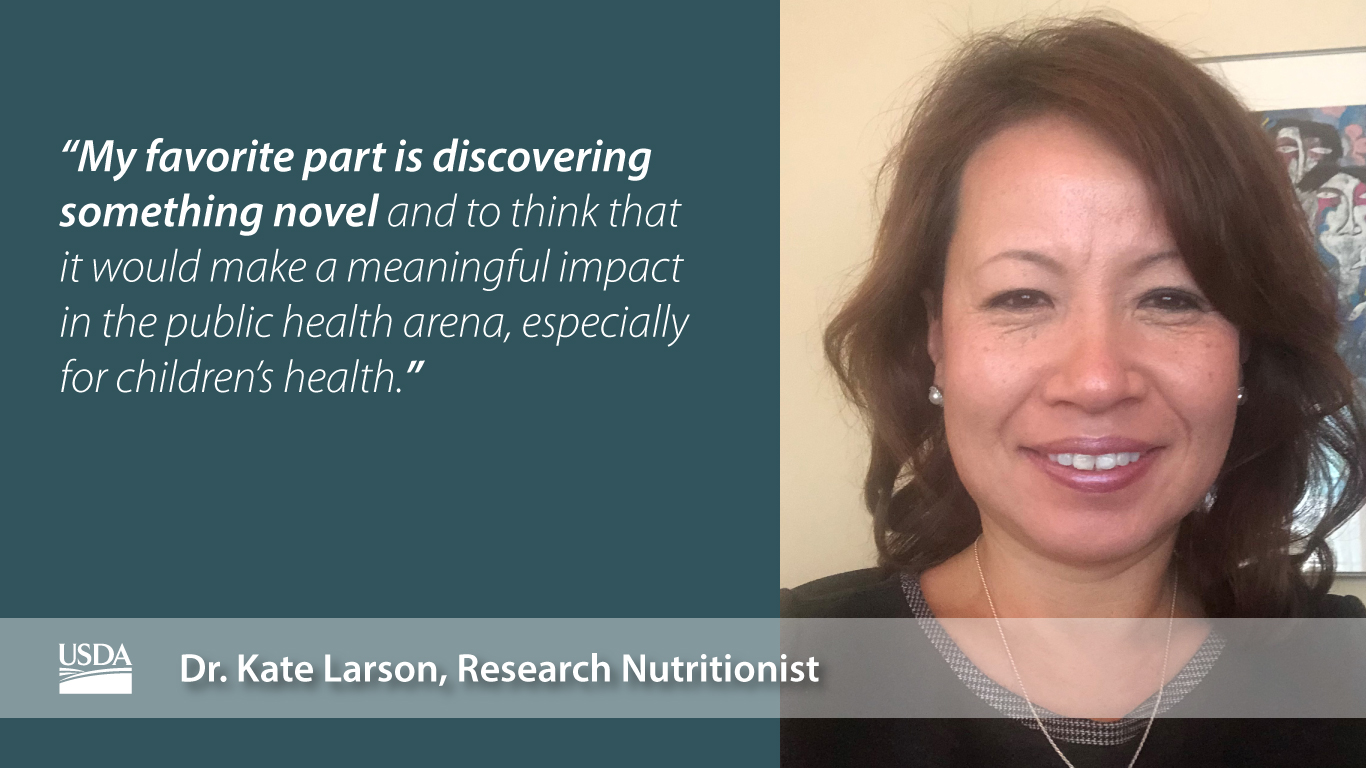| Dr. Kate Larson |

|

For ages 2-19 in 2017-2018, the prevalence of obesity was 19.3%, affecting approximately 14.4 million children and adolescents, as reported by the Centers for Disease Control and Prevention.
Kate Larson, a research leader at the Grand Forks Human Nutrition Research Center, hopes to find ways to help people—especially children—become healthier through maintaining healthy dietary habits.
“I would like to gain knowledge to develop a preventive strategy that focuses on nutritional means to reduce chronic disease risk to improve children’s health and public health,” Larson explained.
Larson’s areas of expertise are obesity, nutritional epigenetics (how food affects gene regulation) and nutritional immunology, which deals with the immune system. Currently, she is working on a study about childhood obesity.
“I’m working on the effects of maternal and paternal diet and exercise conditions that cause childhood obesity and nutritional means to reverse or prevent those adverse effects,” Larson said.
Making new discoveries that contribute to improving public health drives Larson in her career.
“My favorite part is discovering something novel and to think that would make a meaningful impact in the public health arena, especially for children’s health,” Larson said.
Toward the end of this year, Larson will have the chance to study human subjects in two clinical studies, which will be a new experience.
“I haven’t done one prior to this,” Larson said. “I’m very excited!”
Larson strongly encourages working at the Center to those who are interested. She finds the experience of working at the Center rewarding.
“I highly recommend that scientists consider working at centers like ours because we have cutting-edge instruments, intramural funding and the other support that other academic institutions do not have,” Larson explained. “With all that, we can do tremendous research.”
In fact, many other organizations are interested in the Center’s cutting-edge equipment. Some of the machines at the Center are very hard to come across. Larson recalled NASA, by collaborating with UND, proposed to see “how much energy astronauts were expending in their heavy suits. “It’s very sophisticated,” Larson said about the technology.
Whether making an impact on space exploration or here on Earth, clearly the Center has a wide reach. “Over the years, we have produced many scientists who went on to do important things at national and international levels,” Larson said proudly. The Center may be located in a rural area, but its team of ambitious researchers, like Larson, have certainly put Grand Forks on the map.
